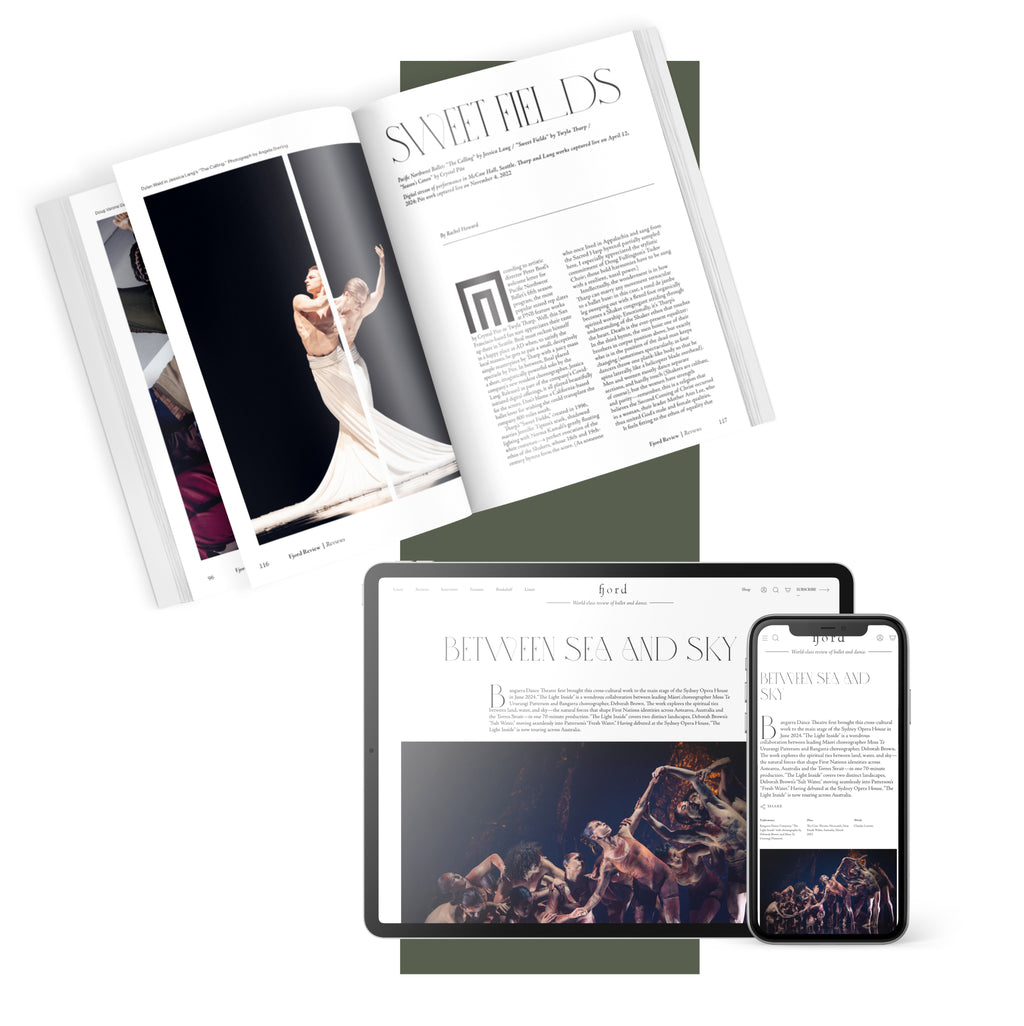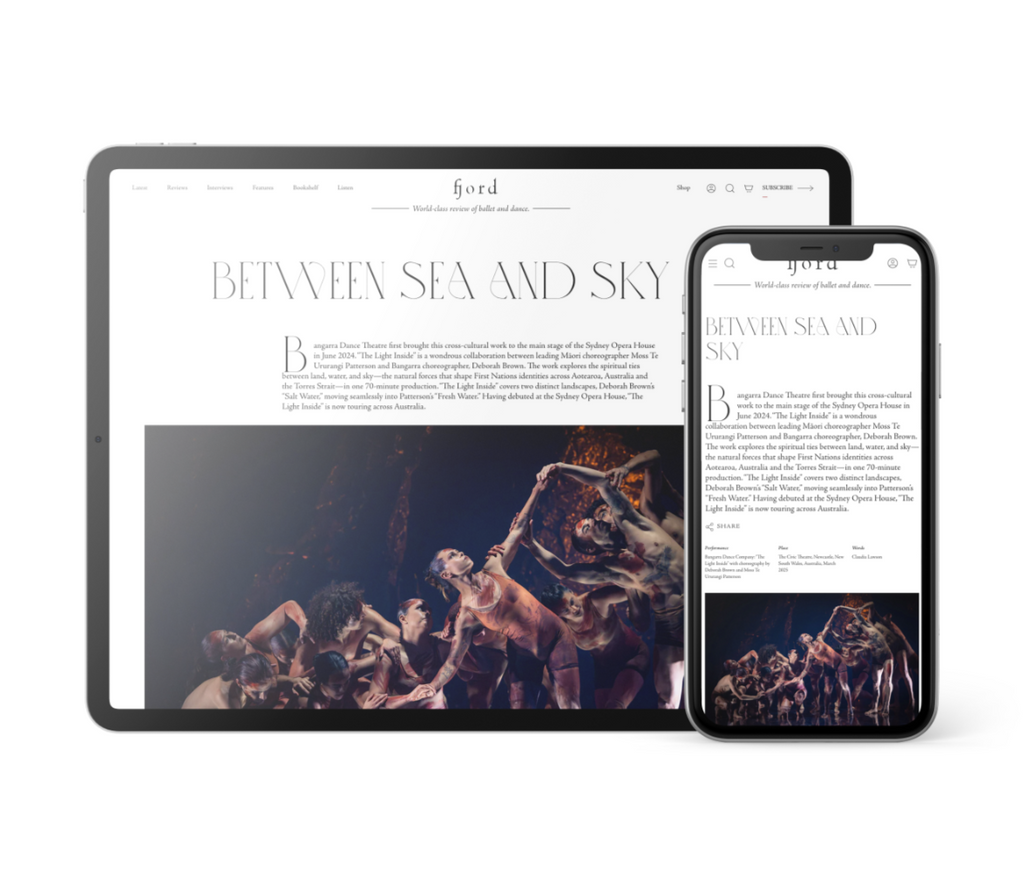In contrast, Patel’s “Learning to Dream Big” is narrative-driven and saccharine sweet as it meditates on the importance of education and reading for women to thrive. In white nightdresses, the light-footed dancers posé and piqué playfully, holding books that illuminate when opened. Their reading material inspires them to act out their dreams and ambitions: while one dancer conducts her colleagues like an orchestra, others sword fight, watch butterflies through binoculars formed from fists, and perform body percussion in a protest scene. It would function perfectly as a children’s ballet, yet it feels a little too kitsch for an adult audience. A moment in which a ballerina dons a medical mask and switches between classical ballet steps and miming heart resuscitation before a “Thank You NHS” banner is paraded across the stage feels particularly twee.
Elsewhere, relationships between male and female dancers are at odds with “Luna’s ”mission to celebrate women’s resilience and independence. Suárez’s “Unwavering” opens with the projection of a Harriet Beecher Stowe quote stating, “there’s no force more powerful than a woman ready to rise,” yet her lead female dancer spends the majority of the time collapsing into the arms of her male partners. As she’s carried waif-like around the space, caught after she launches herself into the air in risky falls, and supported in admittedly impressive leg extensions and body contortions, a lack of awareness of the politics of classical ballet partnering becomes clear. Ansa’s “Overexposed” similarly sees its prima ballerina at the mercy of men—a whole cast, in fact, who manipulate her body.











comments